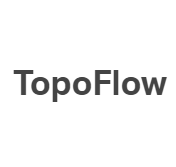Quoted from: Peckham, Scott D., Maria Stoica, Elchin Jafarov, Abraham Endalamaw, and W. Robert Bolton. "Reproducible, component‐based modeling with TopoFlow, a spatial hydrologic modeling toolkit." Earth and Space Science 4, no. 6 (2017): 377-394. https://doi.org/10.1002/2016EA000237
TopoFlow is a spatially distributed, process‐based and open‐source hydrologic model [Peckham, 2009a]. Development of TopoFlow started in 2000 through a collaboration between Peckham (University of Colorado, Boulder) and several colleagues at WERC, the Water and Environmental Research Center (University of Alaska, Fairbanks). Peckham had just developed a spatially distributed rainfall‐runoff model that used the D8 method for determining flow directions over topography given as a digital elevation model (DEM). That model distinguished between DEM grid cells on hillslopes and those containing channels, using overland flow for the former and open‐channel flow hydraulics for the latter [Henderson, 1966]. Each channel grid cell contained a prismatic channel with its own trapezoidal cross section and roughness parameters. It supported three different methods of channel flow routing, namely kinematic wave, diffusive wave, and dynamic wave. It also provided the option of using either Manning's formula or the logarithmic law of the wall to model flow resistance. Hinzman's group at WERC had just published a paper on their ARHYTHM model [Zhang et al., 2000], a spatially distributed hydrologic model for use with Arctic watersheds with an advanced treatment of thermal processes. ARHYTHM used a computational grid of triangles and supported multiple treatments of snowmelt and evaporation, based on many years of prior work in the Arctic, e.g., Hinzman et al. [1996] and Hinzman et al. [1998]. ARHYTHM supported energy balance treatments of both snowmelt and evaporation in cases where shortwave and longwave radiation measurements were available. It also supported simplified treatments of these two processes that required less input data, namely the Degree‐Day method for snowmelt and the Priestley‐Taylor method for evaporation.








